What can we see in the landscape?
Looking at the Landscape
Topic 1: What can we see in the landscape?
When we look at the landscape, what are we seeing?
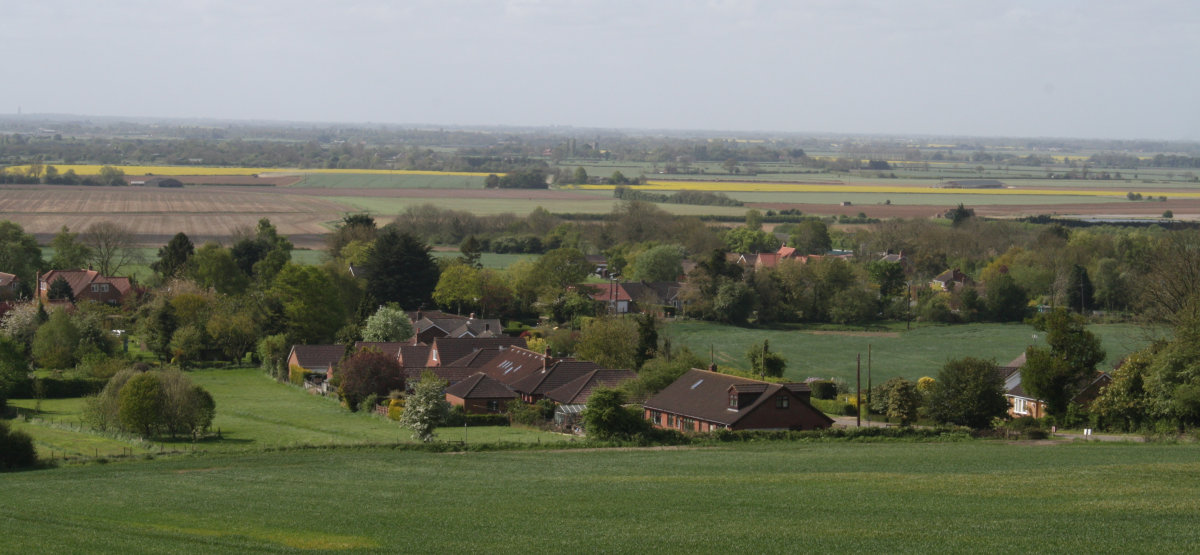
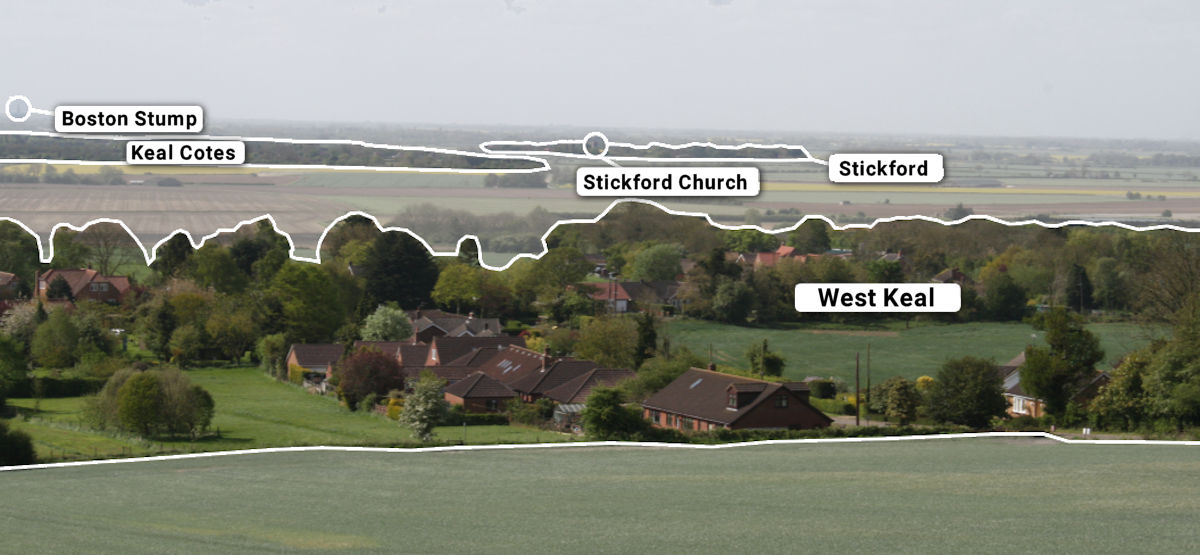
A fen landscape seen from the churchyard above West Keal. Slide from side-to-side
Obviously there is the land itself. In this photograph we are looking down onto low lying flat land. Across the land are roads, railways, rivers and drains, although when looking at them from a distance, they are often only visible as field boundaries. Groups of houses and trees indicate farms and villages, sometimes you can pick out land marks such as churches.
In this part of Lincolnshire these will be located on slightly higher ground. The land between the villages is divided into fields.
Map
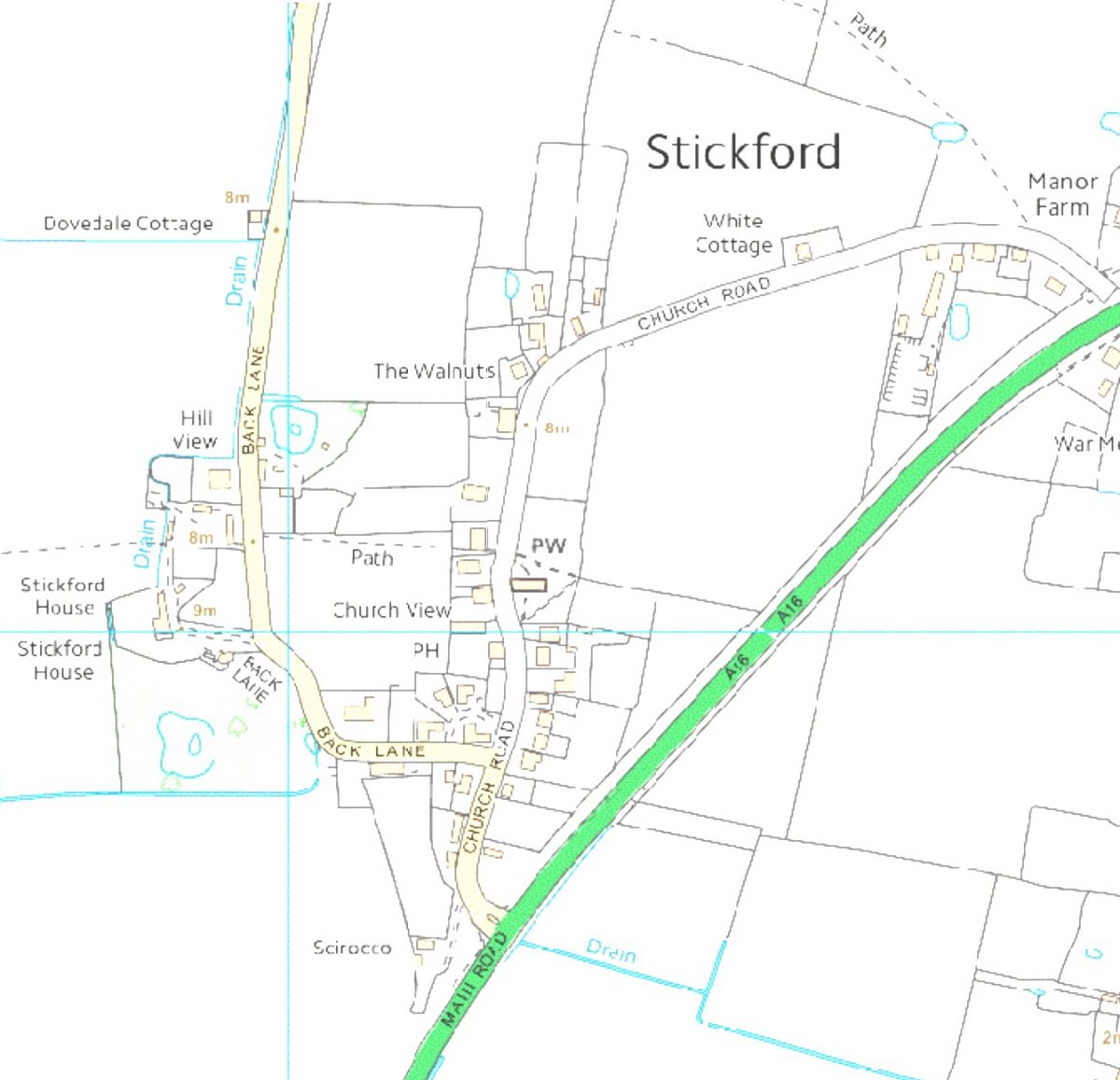
Using a map, and taking a look around one of the villages we can see a main road running through the village (Church Road), with the church (PW) in the middle, and a back lane (Back Lane) to the west. In between are small fields and properties known as closes or yards.
Earthworks
Within some of the fields are earthworks called ridge and furrow, left behind by medieval ploughing:
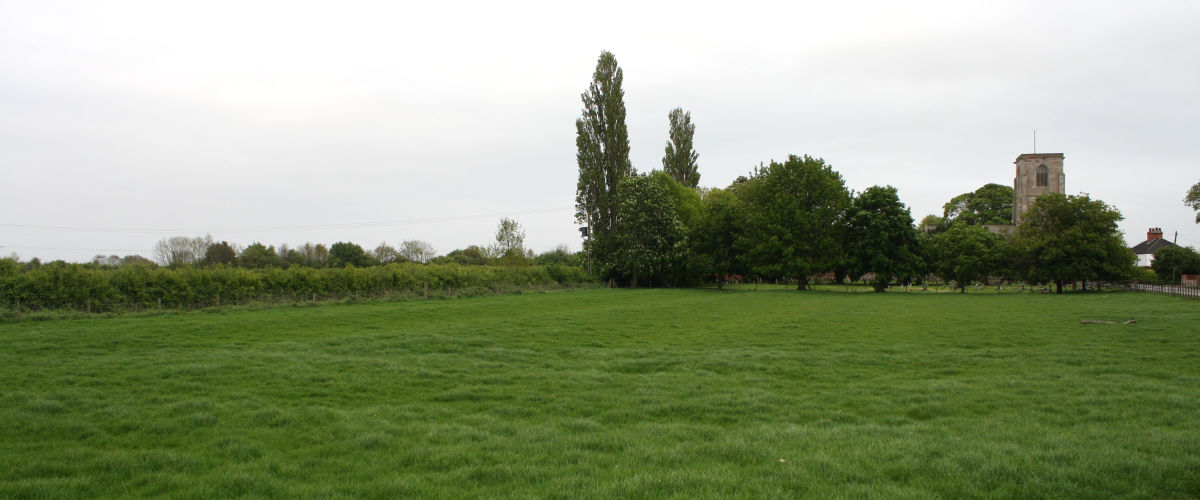
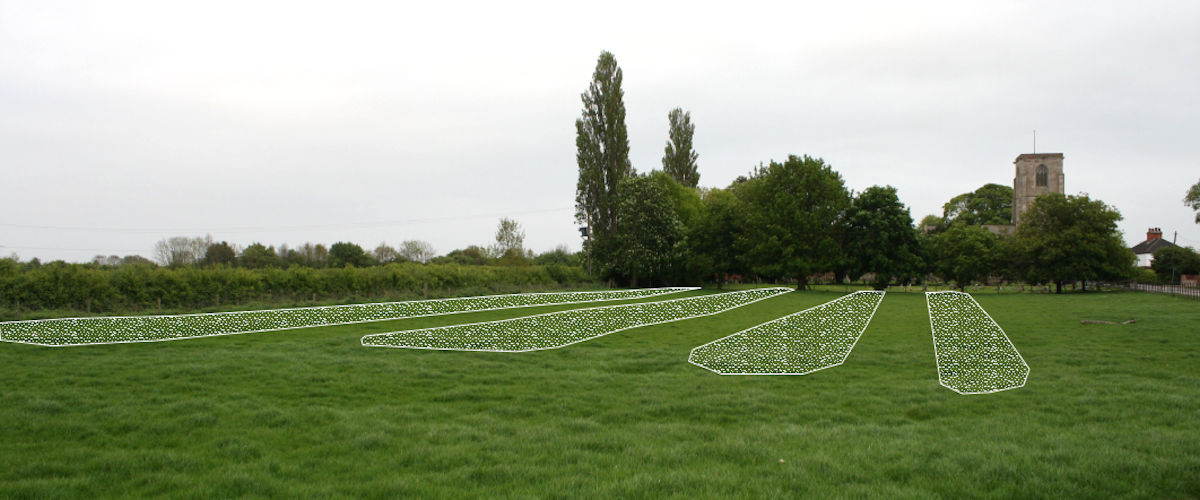
Ridge and Furrow north of Stickford Church. Slide from side-to-side
Just by looking at the landscape we can trace the medieval origins of this village.
Ancient creeks
Looking beyond the village, we can see soil marks left behind by ancient creeks. This tells us that the land around the village used to be marshy:
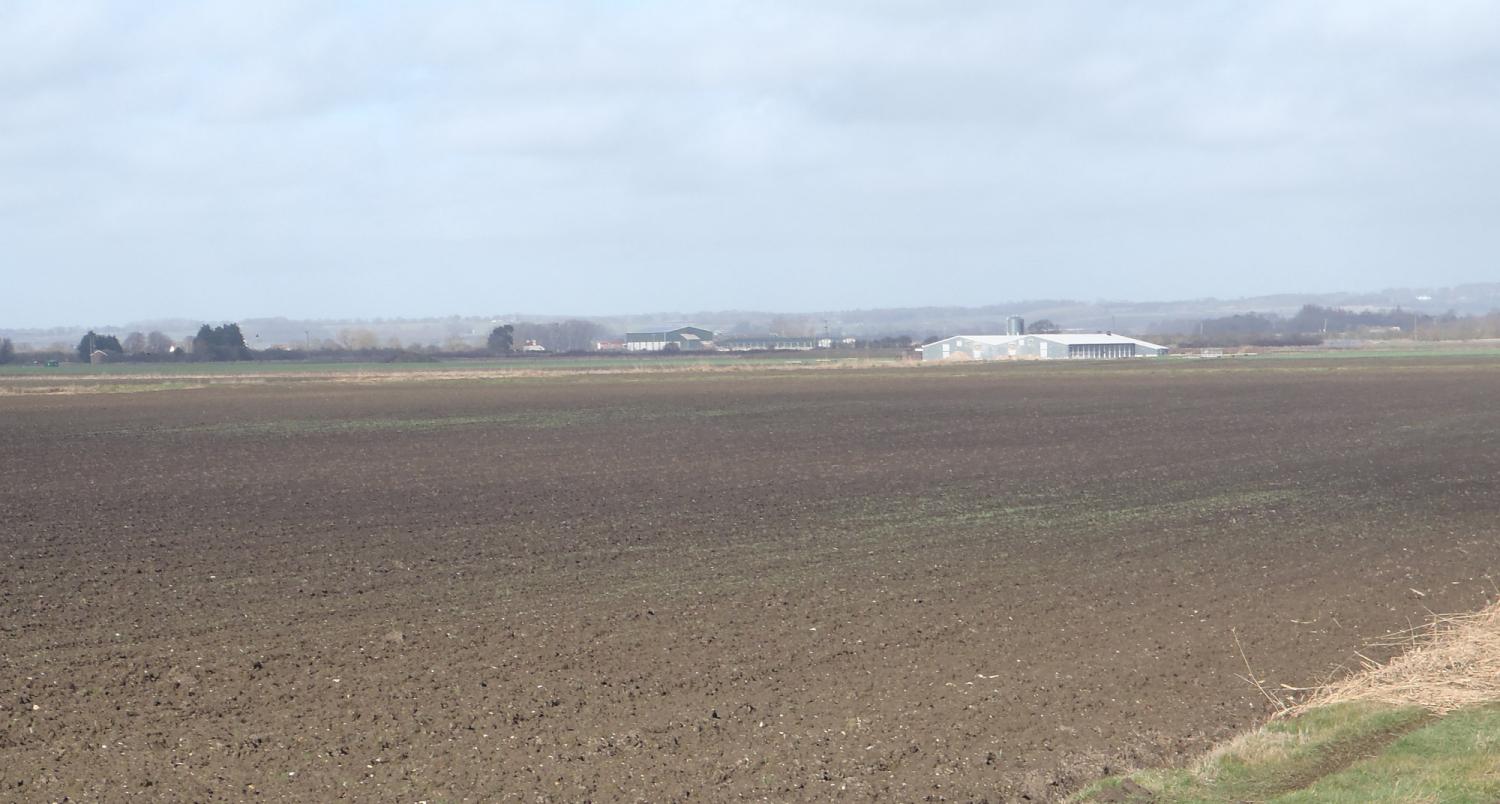
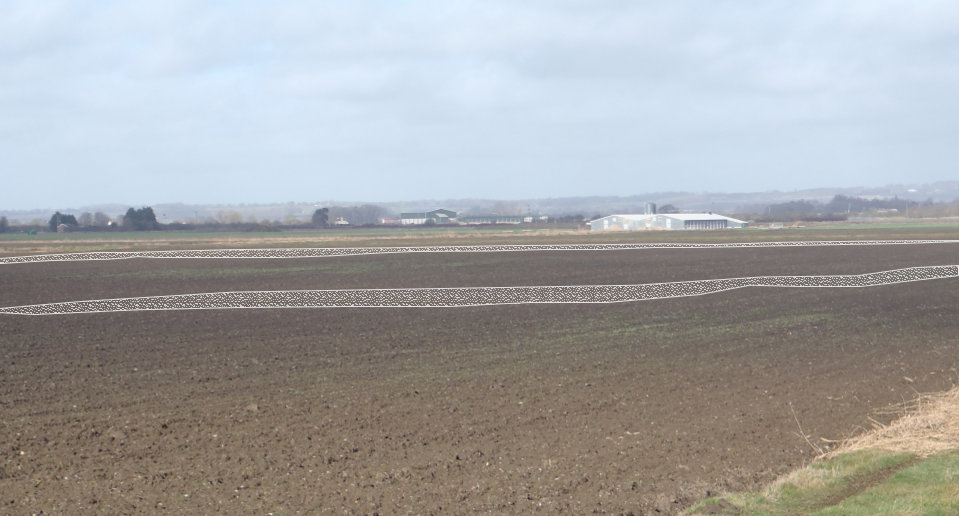
Fenland field east of Stickney. Slide from side-to-side
Questions
Now we have given you an example, have a look at a landscape local to you. Ask yourself the following questions:
- Is the land flat, or are there hills and valleys?
- Is the land low lying or high up?
- Where are the villages?
- Can you follow the lines of roads, railways, rivers?
- Are there large fields, or small fields?
- Are there any lumps, bumps or buildings you can’t explain?
These are the sorts of questions an archaeologist will ask when looking at the landscape. In the following sections you will begin to learn how the answers to these questions begin to tell the story of the historic landscape.
